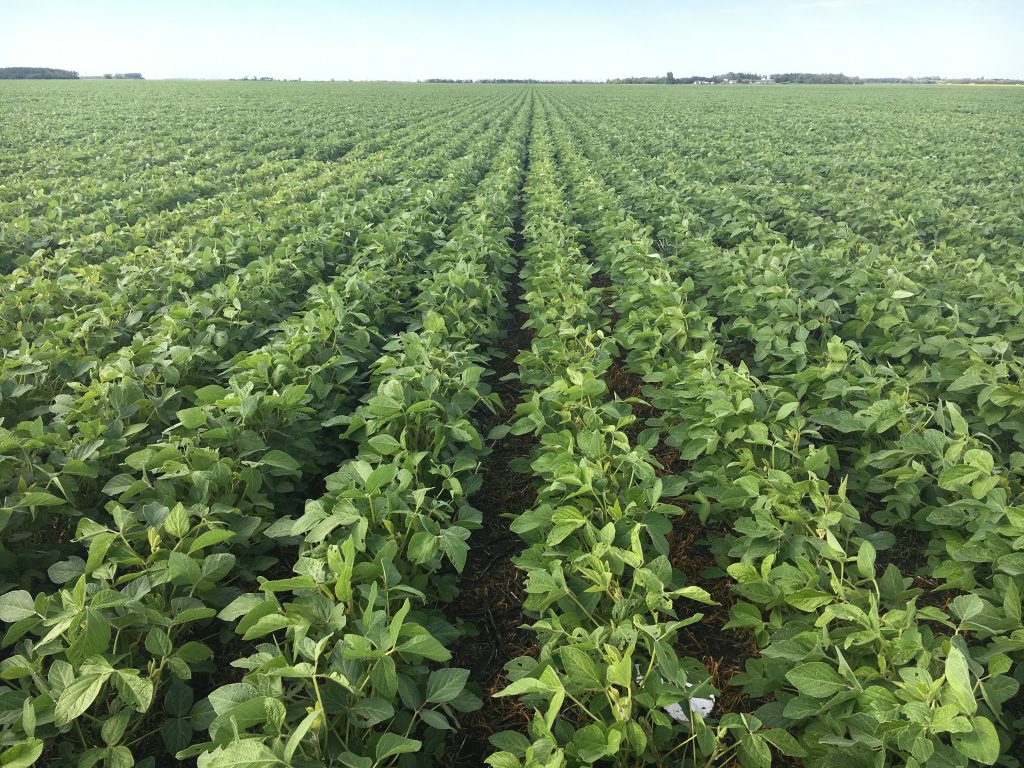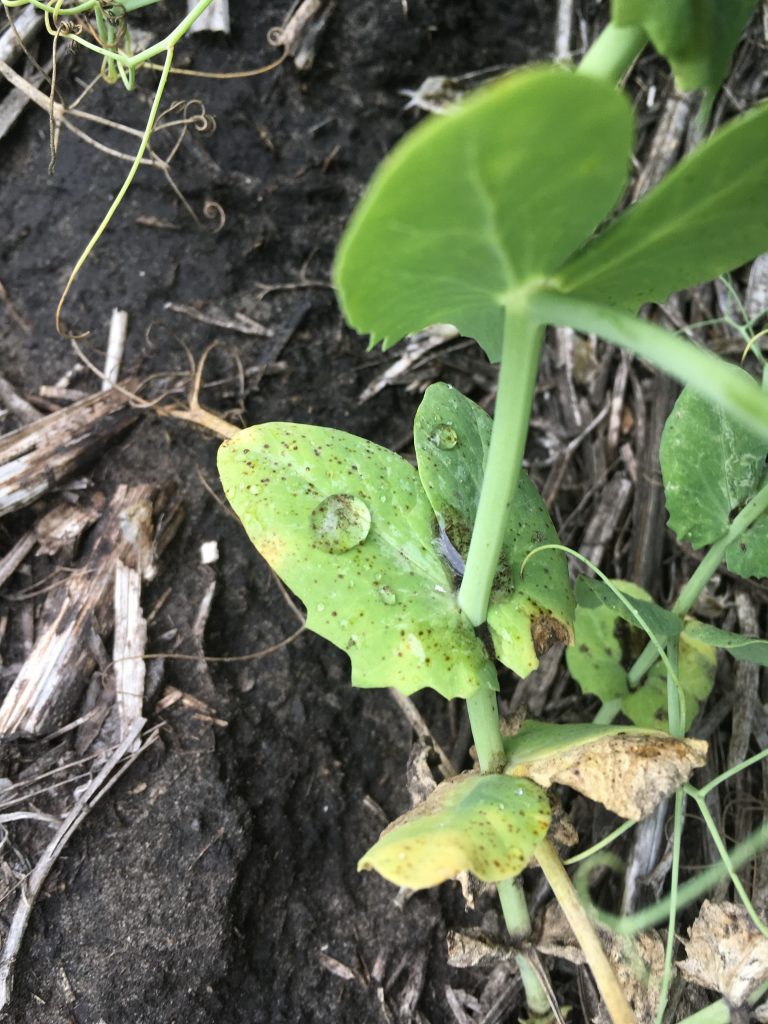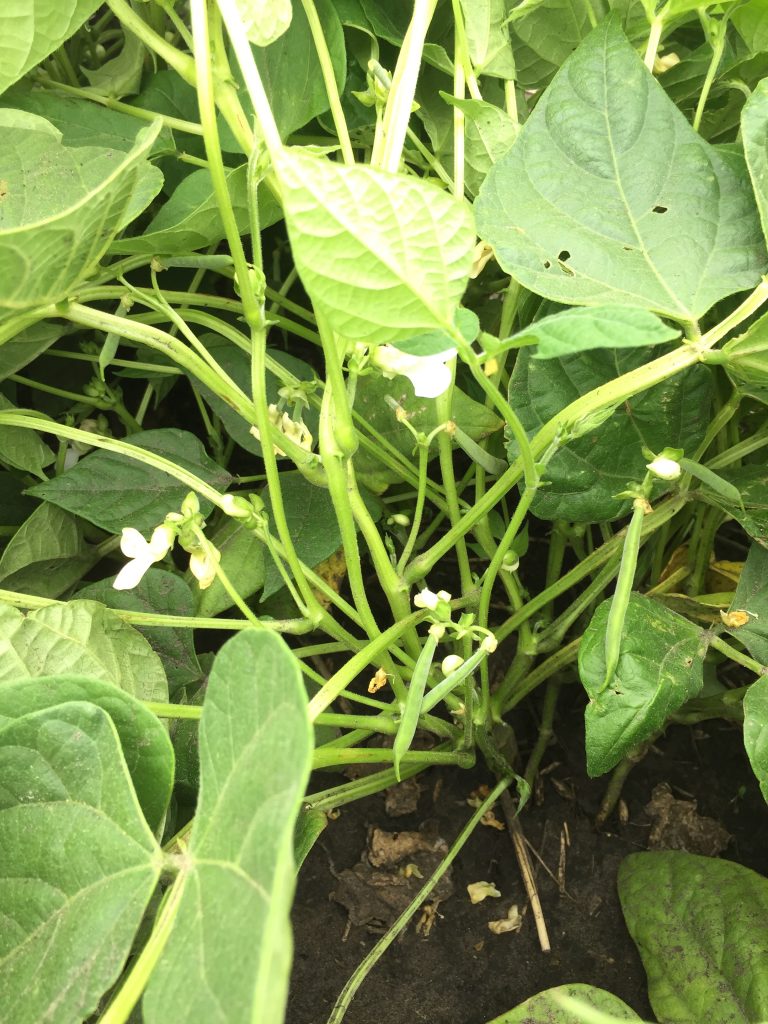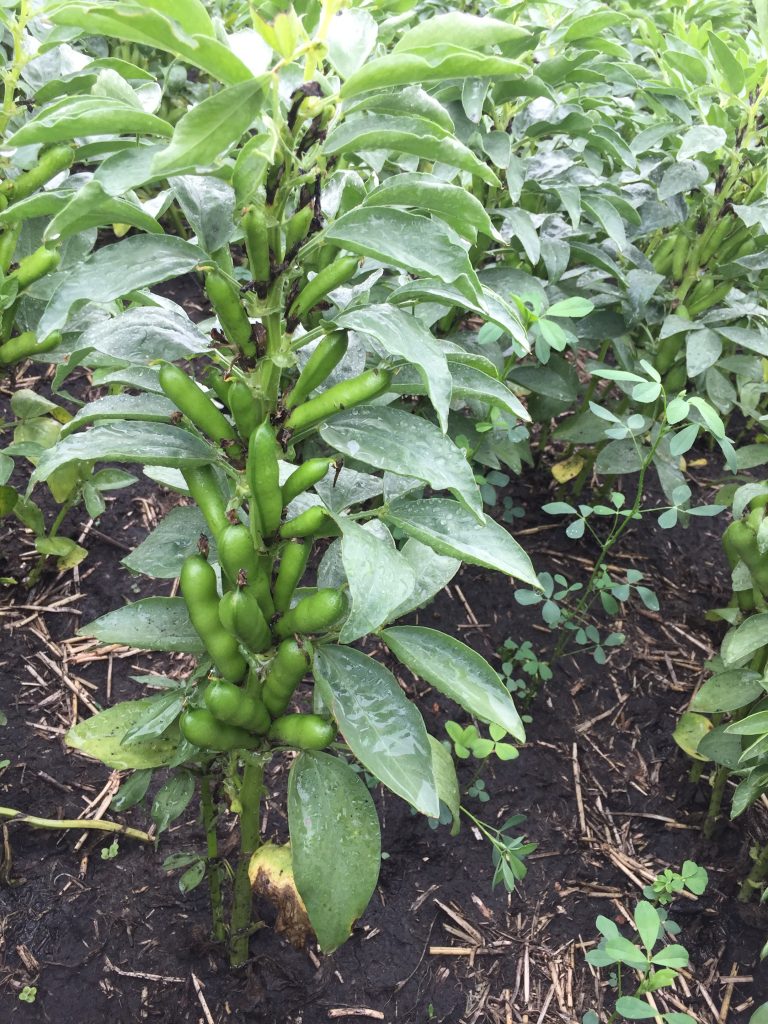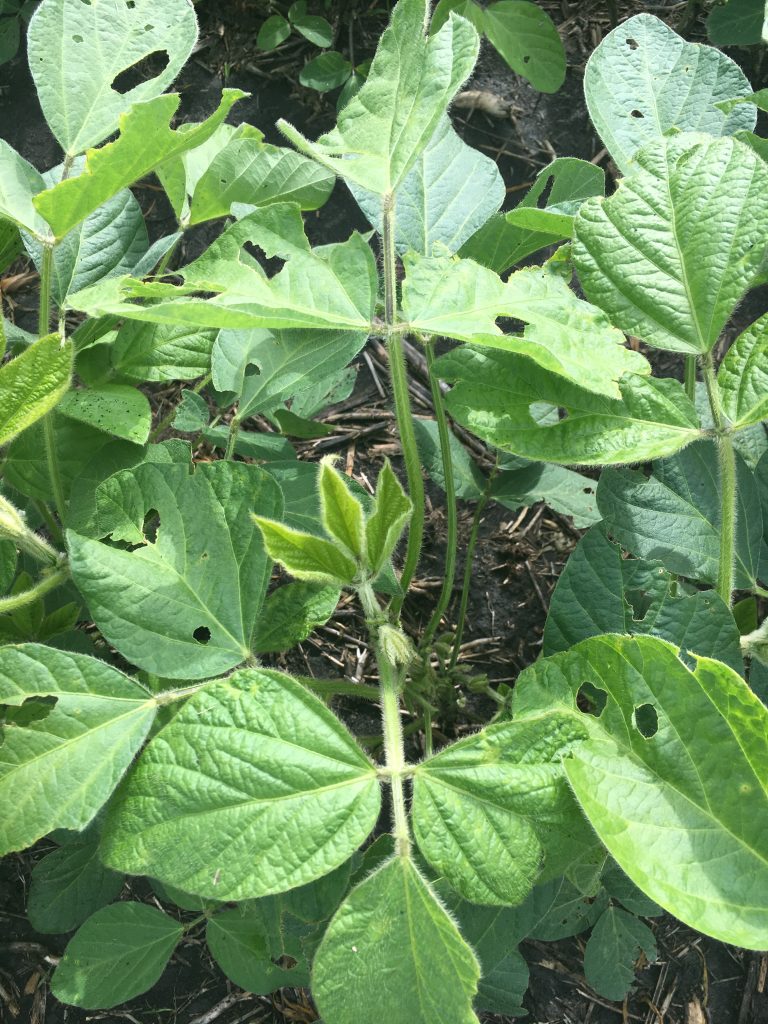JULY 24, 2019
- Crop Update
- Insect Update
- Fungicide Application in Dry Beans
- Crops-a-palooza – TODAY!
Listen to the Bean Report here:
Crop Update
Soybeans
- Soybeans currently range from R1 to R3 across the province, sitting mainly at R2 (full bloom).
- The R3 stage signals the first survey timing for the annual soybean disease survey, which includes foliar disease ratings, root collections and more. Stay tuned for these results during the winter extension season.
- Questions have been coming in about spraying glyphosate on soybeans during flowering. Only consider this if weed pressure is severe enough to threaten yield and if the crop canopy is still open. Do not spray glyphosate if pods are developing.
Field peas
- Pea crops are mainly at the R4 (full pod) stage, ranging from R2 to R6 across the province.
- Mycosphaerella blight is present in the lower canopy of some pea crops, so watch for the spread of disease into the mid- to upper canopy, which may warrant a second fungicide application.
- If you are considering a second application of fungicide on peas, be conscious of preharvest intervals and consult with your buyer for any marketing restrictions.
Dry beans
- Dry beans currently range from R1 to R3 and are mostly at R2 (beginning pod) across the province.
- Fungicide application is now underway. We encourage farmers to use registered products and to check with their buyer.
- Continue to monitor other disease pressure, such as bacterial blight.
Faba beans
- Faba beans are mainly at the R5 (full pod stage), where green seeds fill the pod cavity at one or more nodes.
Insect Update
Pea aphids have been spotted in southwest Manitoba and along the Canada-U.S. border near Emerson, but there have not been any confirmed sightings of soybean aphids in Manitoba yet. Grasshoppers are still feeding and some green cloverworms are present in soybean and dry bean crops. However, they are below threshold in most cases. Caution should be taken to follow defoliation thresholds for both grasshoppers and green cloverworms, which is 15-20% tissue loss now that crops are in the reproductive stages.
Fungicide Application in Dry Beans
Use the Fungicide Decision Worksheet for Managing White Mould in Dry Beans, also available in the MPSG Bean App.
- Warm (15 to 25°C), wet soil about ten days before flowering favours the development of apothecia. Prolonged plant surface wetness for 40+ hours is favourable for white mould infection.
- The best time to apply fungicide for effective white mould control is beginning pod/pin bean (R2).
- On-Farm Network research from 2016-2018 (total of nine site years) has shown an 11% chance of a positive yield response (+55 lbs/ac, on average) from a single fungicide application in pinto and navy beans in Manitoba.
- Consider testing the effectiveness of fungicide use in dry beans on your farm by leaving one or more check strips.
- Watch pre-harvest intervals of fungicide products and consult with your buyer regarding potential restrictions.
More information on fungicide decision-making in dry beans is available at manitobapulse.ca.


